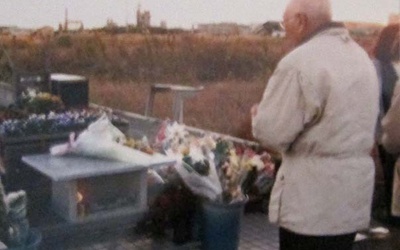Kizuna: Nikkei Stories from the 2011 Japan Earthquake & Tsunami

In Japanese, kizuna means strong emotional bonds.
This series shares stories about Nikkei individual and/or community reaction and perspectives on the Great Tohoku Kanto earthquake on March 11, 2011 and the resulting tsunami and other impacts—either about supporting relief efforts or how what has happened has affected them and their feeling of connection to Japan.
If you would like to share your reactions, please see the “Submit an Article” page for general submission guidelines. We welcome submissions in English, Japanese, Spanish, and/or Portuguese, and are seeking diverse stories from around the world.
We hope that these stories bring some comfort to those affected in Japan and around the world, and that this will become like a time capsule of responses and perspectives from our global Nima-kai community for the future.
* * *
There are many organizations and relief funds established around the world providing support for Japan. Follow us on Twitter @discovernikkei for info on Nikkei relief efforts, or check the Events section. If you’re posting a Japan relief fundraising event, please add the tag “JPquake2011” to make it appear on the list of earthquake relief events.
Stories from this series

Where I was on March 11, 2011
March 25, 2015 • Henrique Minatogawa
In March 2011, it was only a month ago that it had begun working on a publishing company focused on Japanese culture. My job was to take care of a site whose content was related to that theme. At that March 11, in the morning of Brazil, I heard on the radio that a strong earthquake had happened in Japan. Although earthquakes occur regularly in the country, by the tone of the news, I realized that it had been much more …

Four Years After 3.11: Tears Are Not Enough
March 11, 2015 • Norm Masaji Ibuki
Remember March 11, 2011? I was just waking up and getting ready for school when I received a call from CBC radio asking for a comment when I still didn’t have a clue about the tragedy that had befallen the Tohoku region of Japan where I had lived for nine years. There were the first frenetic and panicked TV images: the explosions at the Daiichi Nuclear Reactor in Fukushima, terrifying images of buildings shaking, falling apart, roads ripped apart, then that …

The current situation of the victims and the government
March 10, 2015 • Tsutomu Nambu
On February 14, 2015, just before the fourth anniversary of the disaster, I visited one of the victims. His name is Katsuhiko Okubo (74). He lives in a rented public housing unit prepared for disaster victims. At the time of the disaster, Okubo was living in the Arahama area of Wakabayashi Ward, Sendai City. A tsunami of about 9 meters hit the area, which is a popular swimming beach in the summer. Okubo's house, which he built five years ago …

Grateful Crane Ensemble’s Goodwill Tour to Tohoku, Japan
July 10, 2014 • Soji Kashiwagi
“How was your trip to Japan?” It’s a question I’ve been asked several times since we returned from our Goodwill Tour to Tohoku last month. “It went really well,” I would say. But after that, I would have a hard time finding the words to describe it. “It wasn’t like your typical tour of Japan,” said one of our group members. This is true. We did do some sight-seeing, but the sights to see in the tsunami-affected towns of Minamisanriku and …

Three years after the Great East Japan Earthquake: Interview with Yoshihito Yonezawa the President of the Nanka Miyagi Kenjin Kai - Part 2
March 10, 2014 • Keiko Fukuda
Read part 1 >> Stood speechless at the sight of disaster areas: We will keep doing what we can Soon we will observe the third anniversary of the Great East Japan Earthquake. In the faraway land of America, the Nanka (Southern California) Miyagi Kenjinkai has been engaging in charity activities with their heart all going out to their hometown. While it’s not a big organization, with 100 family units, so far they have collected nearly $160,000—the achievement which no doubt owes much …

Three years after the Great East Japan Earthquake: Interview with Yoshihito Yonezawa the President of the Nanka Miyagi Kenjin Kai - Part 1
March 3, 2014 • Keiko Fukuda
“I was so touched by people’s kindness I wanted to do all that I could to help others” The Great East Japan Earthquake has become an unprecedented disaster. Nearly three years have passed since the day of March 11, 2011. There was a widespread call for support all over the world in the immediate aftermath of the earthquake; and in California, too, the Miyagi Kenjinkai, under the direction of president Yoshihito Yonezawa, actively launched and expanded its charity drive. Japan has …

































